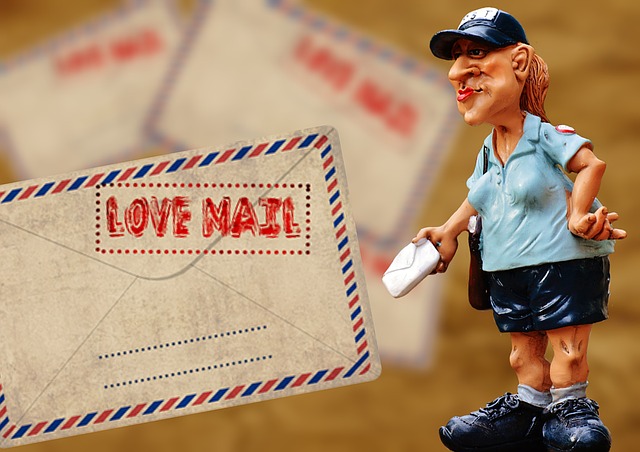Are your emails getting lost in cyberspace, never reaching their intended recipients? It’s frustrating, isn’t it? Well, get ready to conquer the email deliverability game with our comprehensive guide.
In ‘Email Deliverability 101: Everything You Need to Know,’ we’ll dive deep into the factors that affect whether your emails make it to the inbox or get lost in the dreaded spam folder.
Picture this: you meticulously craft a compelling email, hit send, and eagerly await the response. But instead, your message disappears into a black hole, never to be seen again. It’s like shouting into the void, with no one hearing your voice.
But fear not! In this article, we’ll reveal the secrets to ensuring your emails are not only delivered but also actually opened and read. From best practices that boost deliverability to common pitfalls to avoid, we’ll equip you with the knowledge and tools to conquer the inbox.
Get ready to make your emails unstoppable!
Key Takeaways
- Implementing email authentication protocols and maintaining a positive sender reputation are crucial for improving email deliverability.
- Monitoring and analyzing email deliverability metrics such as open rates, click-through rates, bounce rates, and spam complaint rates is essential for evaluating and optimizing email campaigns.
- Utilizing deliverability monitoring tools can provide real-time alerts and notifications to address any issues that may affect email deliverability.
- To maintain good email deliverability, regularly clean and update email lists, engage and interact with subscribers, and continuously improve email content and design.
Factors Affecting Email Deliverability
Do you ever wonder why some of your emails end up in the spam folder? Well, let me tell you, there are several factors that can affect the deliverability of your emails, and understanding them is key to ensuring your messages reach the inbox.
One crucial factor is email authentication. Implementing authentication protocols like SPF, DKIM, and DMARC can help verify the identity of your emails and enhance their deliverability.
Another factor is reputation management. Internet service providers (ISPs) assess the reputation of your sending IP address and domain to determine if your emails are trustworthy. Maintaining a good sending reputation by regularly monitoring and addressing any issues can significantly improve your email deliverability.
Now that you understand the factors that affect email deliverability, let’s move on to best practices for improving it.
Best Practices for Improving Email Deliverability
Improve your chances of reaching the intended recipient’s inbox by following these effective strategies:
-
Implement email authentication protocols such as SPF, DKIM, and DMARC to verify your email’s authenticity and prevent spoofing.
-
Build and maintain a positive sender reputation by sending relevant and engaging content, avoiding spam trigger words, and regularly cleaning your email list.
-
Personalize your emails by addressing the recipient by their name and segmenting your email list based on their preferences and behavior.
-
Monitor your email deliverability regularly by tracking metrics such as open rates, click-through rates, and bounce rates. Analyze the data to identify any issues and make necessary adjustments to improve your email performance.
By implementing these best practices for improving email deliverability, you can ensure that your emails are more likely to end up in the recipient’s inbox rather than their spam folder.
In the next section, we’ll discuss the importance of monitoring and analyzing email deliverability to further enhance your email marketing strategy.
Monitoring and Analyzing Email Deliverability
To truly optimize your email marketing strategy, it’s crucial to regularly track and analyze deliverability metrics that measure the success of your email deliverability. By monitoring these metrics, you can gain valuable insights into how your emails are being received by recipients and identify any areas for improvement.
Key deliverability metrics to monitor include email open rates, click-through rates, bounce rates, and spam complaint rates. By keeping a close eye on these metrics, you can identify trends, spot potential issues, and make data-driven decisions to enhance your email deliverability.
Additionally, deliverability monitoring tools can provide real-time alerts and notifications, allowing you to address any deliverability issues promptly. By staying on top of your deliverability metrics and making necessary adjustments, you can ensure that your emails reach the intended recipients’ inboxes and maximize your email marketing success.
Moving forward, let’s explore how to avoid common email deliverability issues.
Avoiding Common Email Deliverability Issues
Avoiding common email deliverability issues requires careful attention to your email content and sending practices to ensure that your messages successfully reach recipients’ inboxes and engage them effectively. To optimize email deliverability and troubleshoot any potential problems, consider the following:
-
Regularly monitor your email deliverability metrics, such as open rates and bounce rates, to identify any issues.
-
Clean your email list regularly by removing inactive or invalid email addresses.
-
Use authentication protocols like SPF, DKIM, and DMARC to verify your email sending domain and improve deliverability.
-
Avoid using spam trigger words or phrases in your email subject lines and content to prevent your emails from being flagged as spam.
By implementing these best practices, you can enhance your email deliverability and ensure that your messages are delivered to the right recipients. This sets the foundation for maintaining good email deliverability over time.
Maintaining Good Email Deliverability Over Time
To maintain good email deliverability over time, you should regularly clean and update your email list by removing inactive or bouncing email addresses.
Engage and interact with your subscribers by sending them personalized and relevant content, encouraging them to open and click on your emails.
Continuously improve your email content and design by analyzing the performance of your previous campaigns and making necessary adjustments to increase engagement and deliverability.
Regularly Clean and Update Your Email List
Maintaining a squeaky-clean and up-to-date email list is absolutely crucial for ensuring high email deliverability. To effectively manage your email list, here are four key steps to consider:
-
Regularly clean your list: Remove inactive subscribers and invalid email addresses to improve engagement rates and prevent your emails from being marked as spam.
-
Segment your subscribers: Divide your list into smaller groups based on demographics, preferences, or behavior. This allows you to send targeted and personalized emails, maximizing subscriber engagement.
-
Implement a double opt-in process: Require subscribers to confirm their email addresses to ensure that only interested individuals receive your emails. This helps reduce the number of invalid email addresses and spam complaints.
-
Provide easy opt-out options: Make it simple for subscribers to unsubscribe from your list. This not only improves your sender reputation but also shows respect for their preferences.
By following these email list management practices, you can maintain a healthy list and enhance your ability to engage and interact with your subscribers in the subsequent section.
Engage and Interact with Your Subscribers
Immerse yourself in meaningful conversations with your subscribers, building authentic connections and fostering a sense of belonging in your online community.
Subscriber engagement is crucial for achieving high email deliverability rates. When you engage and interact with your subscribers, they feel valued and are more likely to open, read, and respond to your emails.
Personalization plays a significant role in subscriber engagement. Make sure to address your subscribers by their names and tailor your content to their interests and preferences.
Ask for their feedback, opinions, and suggestions to encourage active participation. By nurturing these connections, you create a loyal and responsive subscriber base.
As you continuously improve your email content and design, you can enhance the overall subscriber experience and maintain a strong relationship with them. This will help you achieve even better email deliverability rates in the future.
Continuously Improve Your Email Content and Design
Enhancing your email content and design can lead to even better engagement rates and a stronger connection with your subscribers. To achieve this, consider implementing the following strategies:
-
Email personalization: Tailor your emails to each individual subscriber by using their name, previous purchase history, or specific preferences. This personal touch will make your subscribers feel valued and increase the likelihood of them opening and engaging with your emails.
-
Email segmentation: Divide your subscriber list into smaller, targeted groups based on factors like demographics, interests, or engagement level. By sending more relevant content to each segment, you can ensure that your emails resonate with your subscribers and drive higher conversion rates.
-
Eye-catching design: Invest in visually appealing email templates that align with your brand identity. Use clear and concise language, compelling visuals, and a strong call-to-action to capture your subscribers’ attention and encourage them to take action.
By continuously improving your email content and design, you can enhance the overall effectiveness of your email campaigns and achieve better results.
Frequently Asked Questions
How does email authentication impact email deliverability?
Email authentication, like a sturdy lock on your front door, plays a crucial role in email deliverability. By verifying the sender’s identity and ensuring the message hasn’t been tampered with, it boosts your chances of reaching the recipient’s inbox.
SPF (Sender Policy Framework) confirms the email’s origin, while DKIM (DomainKeys Identified Mail) adds a digital signature. Together, they establish trust and improve your overall deliverability.
What are the most common reasons for emails being marked as spam?
Email spam filters are designed to catch and filter out unwanted or suspicious emails. There are several common reasons why emails may be marked as spam.
One reason is the use of common spam trigger words, such as ‘free,’ ‘guaranteed,’ or ‘buy now.’ These words can raise red flags and lead to emails being classified as spam.
Other factors include the reputation of the sender’s IP address, email content, and the engagement of recipients with previous emails.
How can I ensure my emails are rendering properly across different email clients?
To ensure your emails render properly across different email clients, you should focus on email testing and responsive design.
Email testing allows you to check how your emails appear in various clients before sending them.
Responsive design ensures that your emails adapt to different screen sizes and devices.
By implementing these practices, you can improve the overall user experience and increase the chances of your emails being displayed correctly in all email clients.
Is there a specific time of day that is best for sending emails to maximize deliverability?
Looking to maximize your email deliverability? Wondering if there’s an optimal timing for sending emails? Well, let’s dive into best practices.
While there isn’t a one-size-fits-all answer, studies suggest that sending emails in the late morning or early afternoon tends to yield better results. It’s a time when people are more likely to check their inbox and engage with emails.
However, remember to consider your specific audience and test different times to see what works best for you.
What steps can I take to prevent my emails from being blocked or blacklisted by ISPs?
To prevent your emails from being blocked or blacklisted by ISPs, you need to focus on email engagement metrics and maintaining a clean email list.
Ensure that your emails have high open and click-through rates, as this indicates to ISPs that your content is relevant and wanted by recipients.
Additionally, regularly clean your email list by removing inactive or invalid email addresses.
By prioritizing engagement and maintaining a clean list, you can improve your chances of avoiding blocks and blacklists.
Conclusion
Congratulations! You’ve now mastered the art of email deliverability. You’ve delved into the intricate factors that affect it, discovered the best practices to improve it, and learned how to monitor and analyze it.
You’ve also uncovered the common hurdles and how to avoid them, ensuring your emails reach their intended recipients. Like a skilled email deliverability wizard, you’ll maintain the magic over time, captivating your audience with your captivating messages.
So, let your emails soar through the digital realm, leaving a trail of delighted recipients in their wake. Get ready to conquer the inbox!








